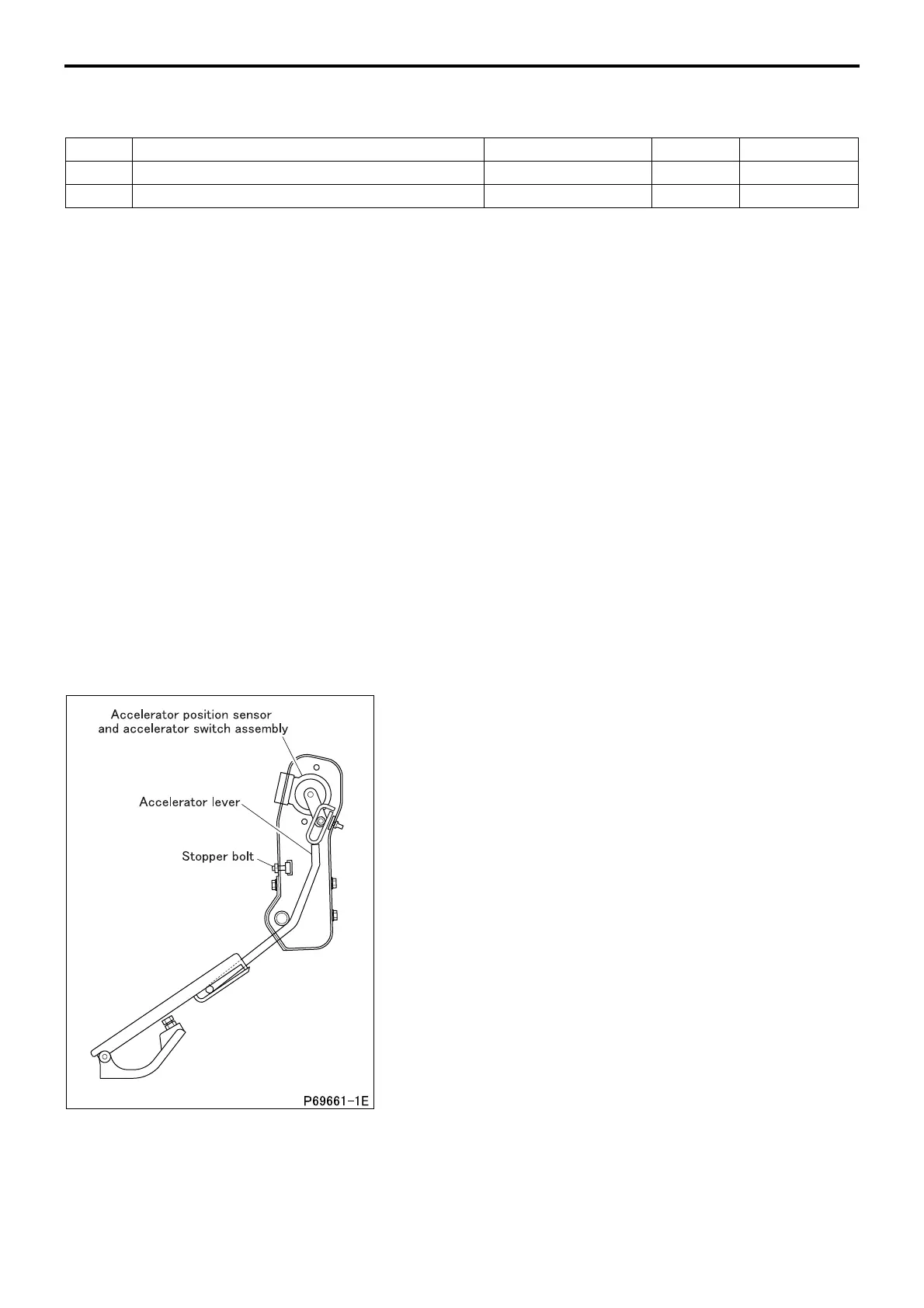13-8
1. Inspecting and Adjusting No-load Minimum and Maximum Speeds
Service standards
[Work before inspection and adjustment]
• Before starting the inspection and adjustment, carry out the fol-
lowing preparatory steps:
• Warm up the engine until the engine coolant temperature is ap-
proximately 80 to 95°C; (Check by the service data “32: Water
temperature” of the Multi-Use Tester.)
• Turn off all lamps and accessories;
• Put the transmission in neutral;
• Set the steering wheel at the straight-ahead position; and
• Attach a tachometer.
[Inspection]
(1) No-load minimum speed
• Without depressing the accelerator pedal, measure the engine
speed.
• If the measurement is not within the standard value range, in-
spect the accelerator position sensor and accelerator switch.
(See Gr13E.)
• If no defects are evident during the above inspection, check the
diagnosis code in the engine electronic control unit or the fuel
system.
(2) No-load maximum speed
• Depress the accelerator pedal as far as it will go.
• With the accelerator pedal touching the stopper bolt, measure
the engine speed.
• If the measurement is not within the standard value range, in-
spect the accelerator position sensor and accelerator switch.
(See Gr13E.)
• If no defects are evident during the above inspection, check the
diagnosis code in the engine electronic control unit or the fuel
system.
Location Maintenance item Standard value Limit Remedy
– Minimum no-load speed (idling speed) 650 ± 25 rpm – Adjust
– Maximum no-load speed 3100 ± 50 rpm – Adjust
ON-VEHICLE INSPECTION AND ADJUSTMENT

